Aug. 17, 2011 - Nauvoo Tour - Making Wagon Wheels
We
left town and drove back to Old Nauvoo. The lady at the book
store had told us of a publication we might be interested in that we
could find at the Community of Christ gift shop in the restored "Red
Brick Store" that once belonged to Joseph Smith.
As we passed through Old Nauvoo we saw this marker commemorating a property that once belonged to Porter Rockwell, a Nauvoo resident who later became an old west gunslinger.
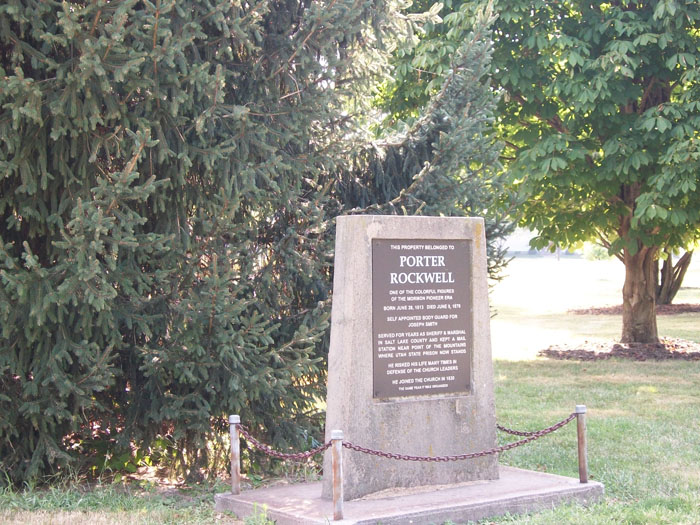
The Community of Christ had a sign designating the part of Old Nauvoo belonging to their church most of which was at one time the personal property of Emma Smith, wife of the Joseph Smith. She stayed behind after Brigham Young and the rest of the saints migrated west.
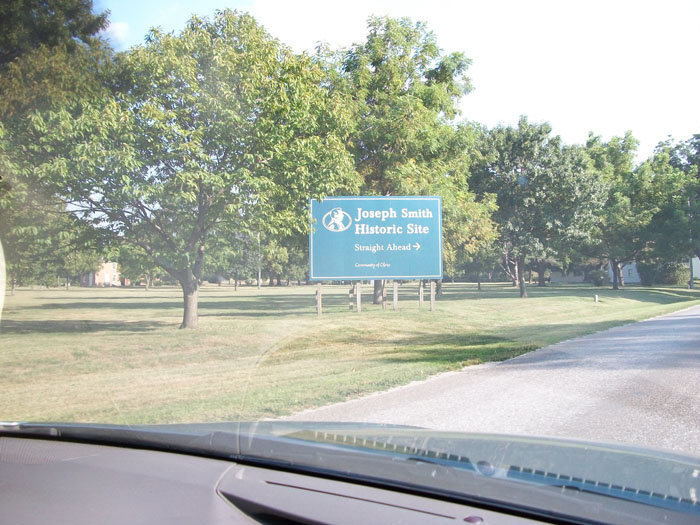
This was once Emma's home.
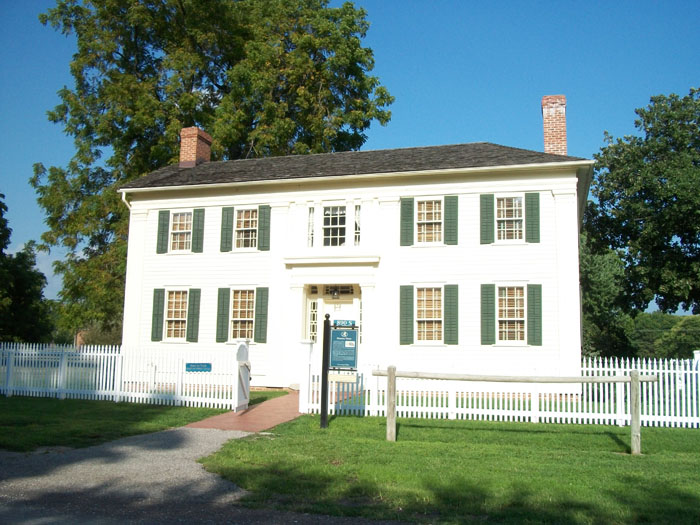
We drove on to the Community of Christ Visitor's Center.
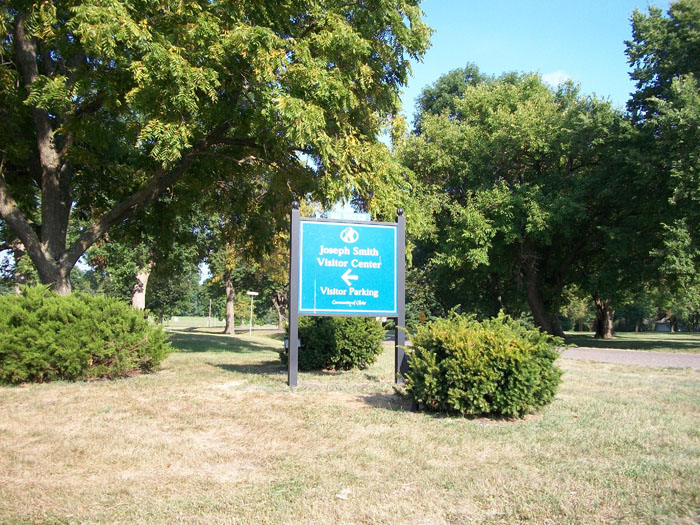
Unfortunately, they were closed. So we turned back to the LDS restored buildings which were still open.
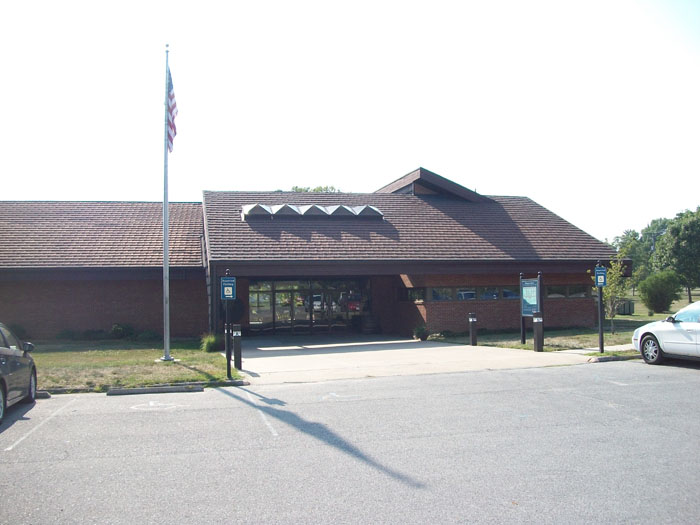
Although they were about to close at 6:00 PM, the LDS missionaries allowed us and other visitors to hear their narrations and demontrations.
This missionary explained a wainright's shop where wagon wheels were made. Here he shows us a wagon spoke and felloe (part of the curved wagon wheel). There were 2 spokes per felloe and 7 felloes to each rear wheel. Front wheels were smaller to allow room for it to turn.
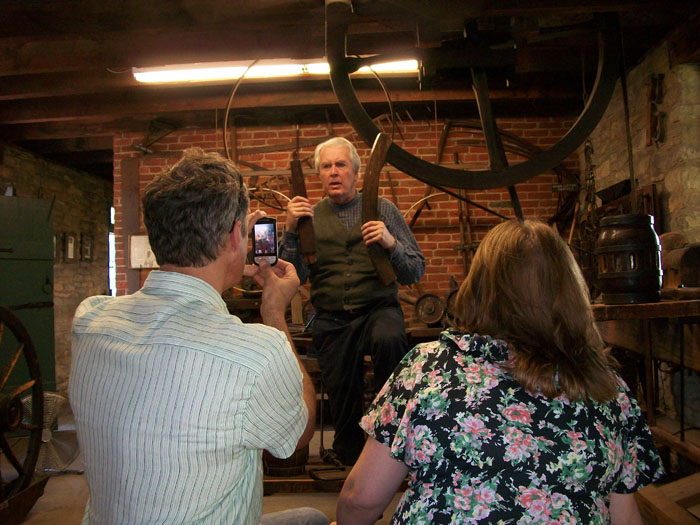
The wainright would give one spoke and one felloe to a prosepective buyer and tell him, "Go make me 14 more of these (felloes) and 28 of these (spokes) then return them to me." And that was just for the rear wheels. More were needed for the front.
While the customer was making the spokes and felloes, the wainright would make the hub on this foot-powered lathe.
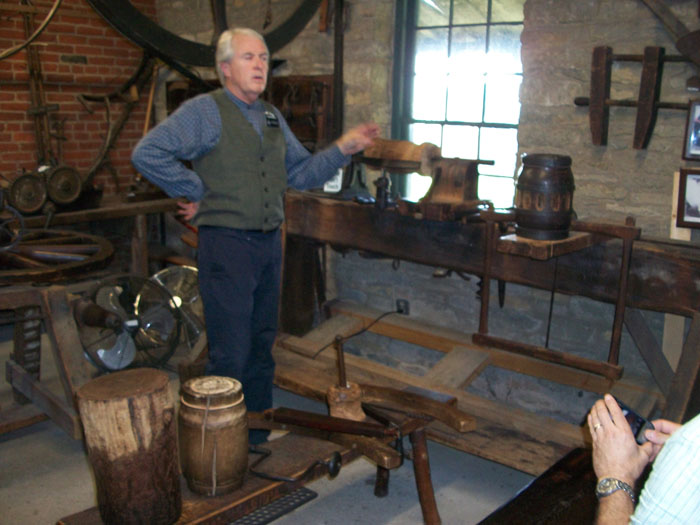
After turning the hub on the lathe, he would take a mallet in hand and drive an auger into one end of the hub to set it in place. Then he would clamp the hub in a vise so he could turn the auger all the way through the hub.
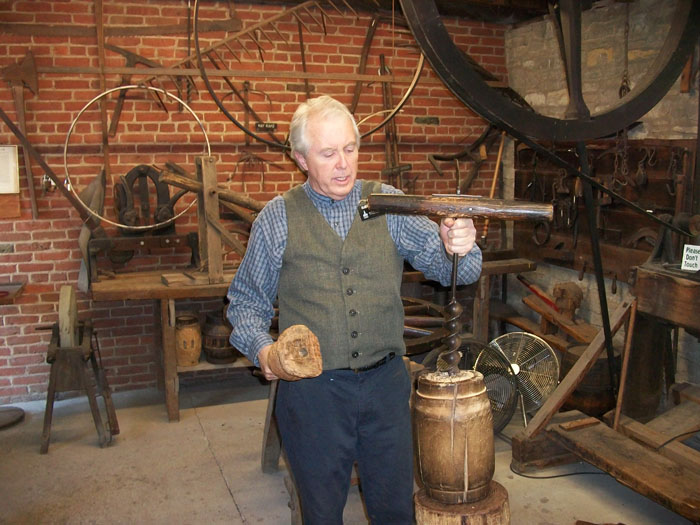
After the hole through the hub was made, he would use this ream to enlarge the hole and turn it into a conical shape to receive the metal lining.
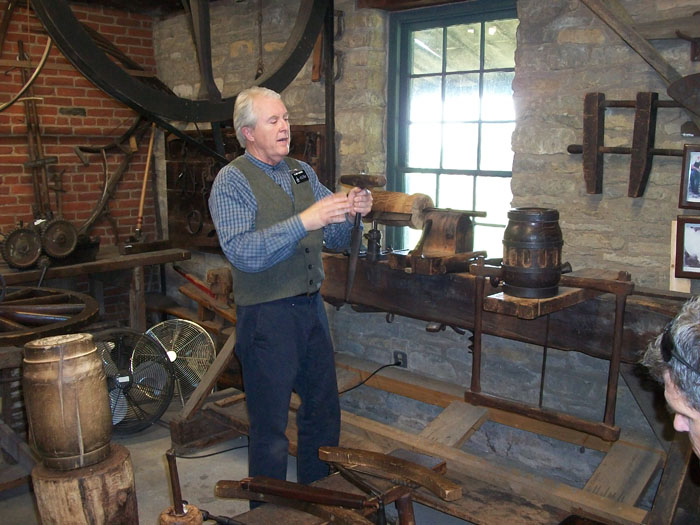
This is the metal lining. I think other names for it were axle race or bearing race. Anyway, it was in the shape of a cone so it could be tighted. It would not have lasted long if the metal axle rubbed bare wood.
These metal linings were manufactured in St. Louis and purchased by the Nauvoo wainrights.
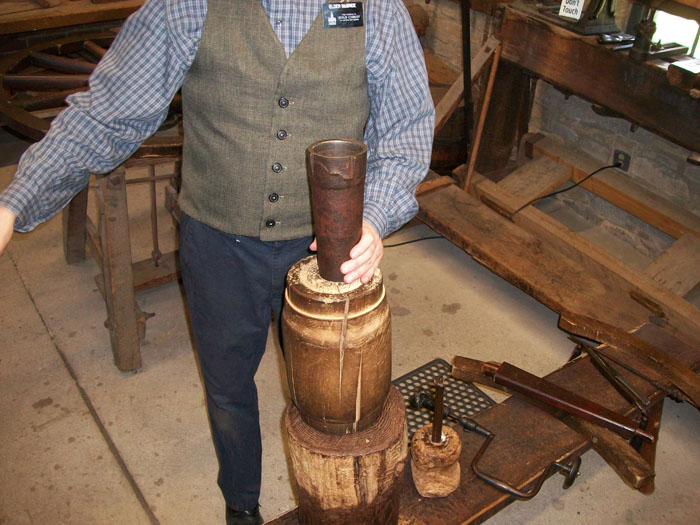
A small auger bit set in a brace (a hand drill) was used to drill a couple holes in line for each of the spokes. The spoke holes were then squared up and finished using a wood chisel driven with a wooden mallet.
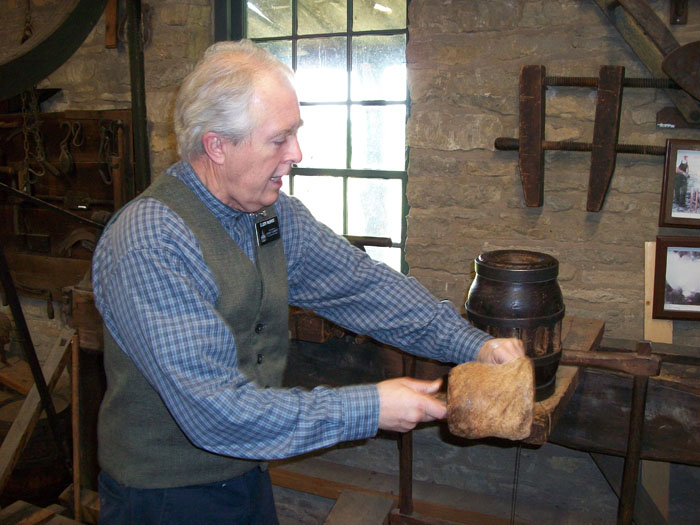
The missionary told us these old wagons were only 3 feet wide and 11 feet long. 60% of the cargo was food and there was no place to sit. They were pulled by ox team. The drivers walked alongside guiding the oxen as they pulled the 2,000 lb. load.
The final piece was the metal outer rim or "tire" that held everything together.
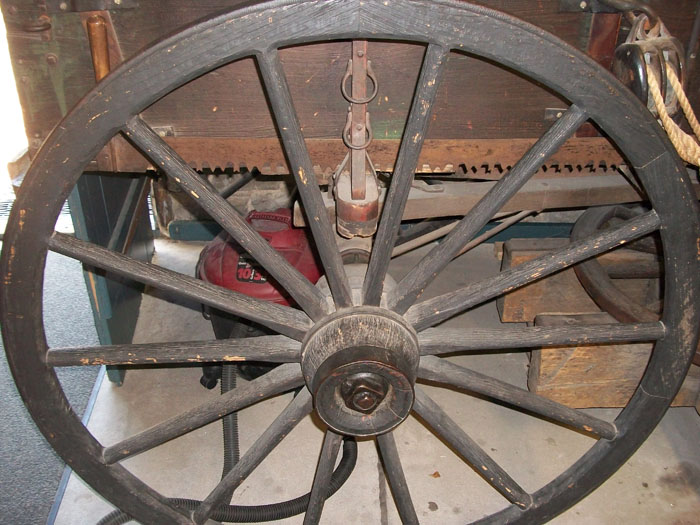
A blacksmith would make the metal rim which begins as flat bar iron. The wainright would purchase and measure off the distance needed using this tool, a sort of traveling ruler called a "tire spoke traveller."
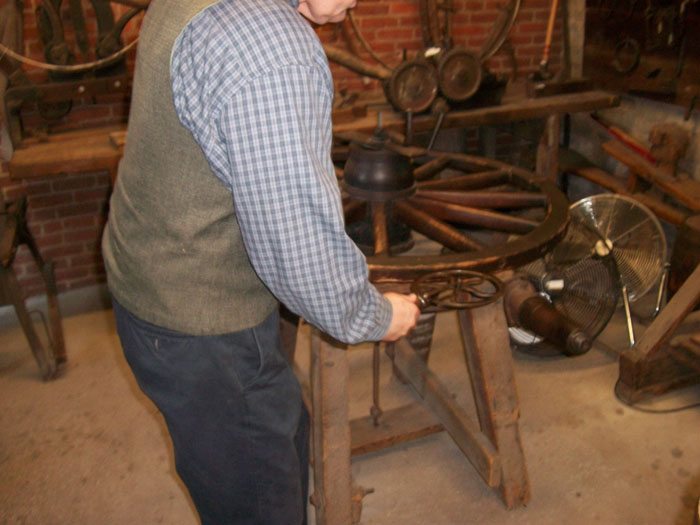
He would cut the tire 1/2" short then round it using this rounding machine.
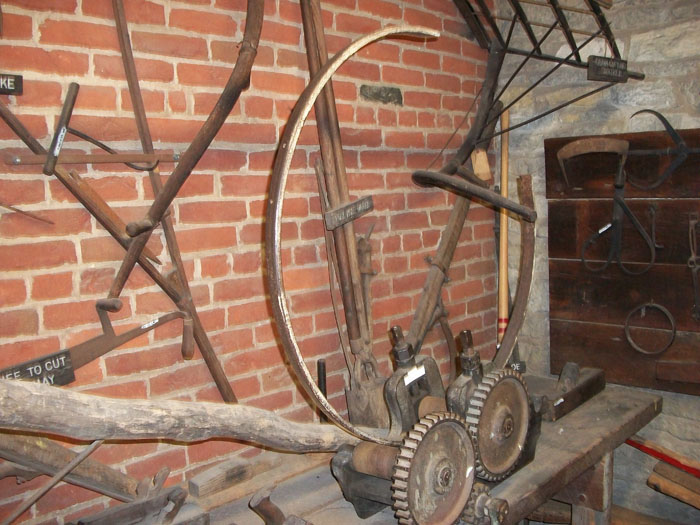
Once it was shapped, the Wainright would heat the ends white hot and pound them together with a hammer, welding them. The tire was then headed to expand it. After heating, it was driven onto the wooden wagon wheel using hammers, then it was rapidly cooled in water to shrink it back again. That's why they cut it 1/2 inch too short, so it would squeeze all the wooden parts together.
As we passed through Old Nauvoo we saw this marker commemorating a property that once belonged to Porter Rockwell, a Nauvoo resident who later became an old west gunslinger.
The Community of Christ had a sign designating the part of Old Nauvoo belonging to their church most of which was at one time the personal property of Emma Smith, wife of the Joseph Smith. She stayed behind after Brigham Young and the rest of the saints migrated west.
This was once Emma's home.
We drove on to the Community of Christ Visitor's Center.
Unfortunately, they were closed. So we turned back to the LDS restored buildings which were still open.
Although they were about to close at 6:00 PM, the LDS missionaries allowed us and other visitors to hear their narrations and demontrations.
This missionary explained a wainright's shop where wagon wheels were made. Here he shows us a wagon spoke and felloe (part of the curved wagon wheel). There were 2 spokes per felloe and 7 felloes to each rear wheel. Front wheels were smaller to allow room for it to turn.
The wainright would give one spoke and one felloe to a prosepective buyer and tell him, "Go make me 14 more of these (felloes) and 28 of these (spokes) then return them to me." And that was just for the rear wheels. More were needed for the front.
While the customer was making the spokes and felloes, the wainright would make the hub on this foot-powered lathe.
After turning the hub on the lathe, he would take a mallet in hand and drive an auger into one end of the hub to set it in place. Then he would clamp the hub in a vise so he could turn the auger all the way through the hub.
After the hole through the hub was made, he would use this ream to enlarge the hole and turn it into a conical shape to receive the metal lining.
This is the metal lining. I think other names for it were axle race or bearing race. Anyway, it was in the shape of a cone so it could be tighted. It would not have lasted long if the metal axle rubbed bare wood.
These metal linings were manufactured in St. Louis and purchased by the Nauvoo wainrights.
A small auger bit set in a brace (a hand drill) was used to drill a couple holes in line for each of the spokes. The spoke holes were then squared up and finished using a wood chisel driven with a wooden mallet.
The missionary told us these old wagons were only 3 feet wide and 11 feet long. 60% of the cargo was food and there was no place to sit. They were pulled by ox team. The drivers walked alongside guiding the oxen as they pulled the 2,000 lb. load.
The final piece was the metal outer rim or "tire" that held everything together.
A blacksmith would make the metal rim which begins as flat bar iron. The wainright would purchase and measure off the distance needed using this tool, a sort of traveling ruler called a "tire spoke traveller."
He would cut the tire 1/2" short then round it using this rounding machine.
Once it was shapped, the Wainright would heat the ends white hot and pound them together with a hammer, welding them. The tire was then headed to expand it. After heating, it was driven onto the wooden wagon wheel using hammers, then it was rapidly cooled in water to shrink it back again. That's why they cut it 1/2 inch too short, so it would squeeze all the wooden parts together.